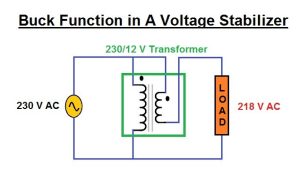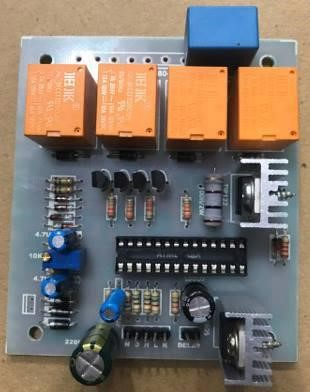An Automatic Voltage Stabilizer (AVS), also known as an Automatic Voltage Regulator (AVR) or Voltage Regulator (VR), stabilizes the mains power supply voltage to a load.
Line Interactive uninterruptible power supply provides this function, which protects against power issues including sags, brownouts, and surges.
The input voltage window for Automatic Voltage Stabilisers is large (+20/-40 percent). The AVS utilizes a transformer to boost (step-up) the output voltage when the input supply voltage is too low. The AVS, on the other hand, decreases the input supply voltage to a safe working range if it is too high (this process is known as buck or step-down).
Types of Voltage Stabilizers:
Many electrical equipment in the household, industry, and commercial systems now have voltage stabilizers. Previously, manually controlled or switchable voltage stabilizers were used to boost or buck input voltage to provide an output voltage within a specified range. As switching devices, electromechanical relays are used in the construction of such stabilizers.
Relay Type Voltage Stabilizers:
Voltage control is done with this sort of voltage stabilizer by switching the relays to link one of a variety of transformer tappings to the load, whether for boosting or bucking operation. The diagram below depicts the internal circuitry of a relay type stabilizer.
Servo Types Voltage Stabilizers:

These are simply referred to as servo stabilizers (servomechanism, sometimes known as negative feedback), and as the name implies, they employ a servo motor to regulate voltage. These are primarily used for high output voltage precision, generally 1% with input voltage variations up to 50%. The internal circuit of a servo stabilizer is illustrated in the diagram below, which includes the servo motor, auto transformer, buck boost transformer, motor driver, and control circuitry.
Static Voltage Stabilizers:

Static voltage stabilizers, as the name implies, do not contain any moving parts, unlike servo stabilizers, which use a servo motor mechanism. In contrast to typical stabilizers, it employs a power electronic converter circuit to perform voltage control rather than a variac. When compared to servo stabilizers, these stabilizers may generate more precision and good voltage control, with typical regulation of 1%.
How Does Automatic Voltage Stabilizer Work?
Voltage control is essential for two main reasons: overvoltage and undervoltage. The process of increasing voltage from a low voltage situation is known as a boost operation, and the process of decreasing voltage from an overvoltage condition is known as a buck operation.
These two basic activities are required in any voltage stabilizer.
Boost Operation:

The supply voltage is applied to a transformer, which is often a step-down transformer, in this case. This transformer is wired such that the secondary output voltage is added to the primary supply voltage.
In the event of a low voltage condition, the stabilizer’s electronic circuit flicks the matching relay, allowing this extra supply (incoming supply + transformer secondary output) to be supplied to the load.
Buck Operation:
Buck operation involves connecting the secondary of a step-down transformer in such a way that the secondary output voltage is subtracted from the input voltage.
As a result, when the incoming voltage rises, the electronic circuit activates the relay, which transfers the deducted supply voltage (i.e., the incoming voltage minus the transformer secondary voltage) to the load circuit.

When the voltage is normal, the electronic circuit switches the load totally to the incoming supply, with no transformer voltage.
These procedures are the same for all stabilizers, whether they have a regular mechanism or a servo system. It also conducts lower and higher voltage cut off actions in addition to these basic activities.
Final Words:

According to popular belief, new LED TVs, refrigerators, air conditioners, and other products have built-in stabilizing capabilities and hence do not require extra voltage stabilizers.
They cannot, however, boost or buck as much range voltage as independent voltage stabilizers can. If your power suffers regular voltage swings, it is advised that you install a voltage stabilizer for your household or industrial purposes.

